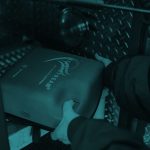
Introduction: This study sought to identify the availability of automated external defibrillators (AEDs) in schools in the region served by West Midlands Ambulance Service University NHS Trust (WMAS), United Kingdom, and the number of out-of-hospital cardiac arrests (OHCA) that occurred at or near to schools. A secondary aim was to explore the cost effectiveness of school-based defibrillators.
Methods: This observational study used data from the national registry for OHCA (University of Warwick) to identify cases occurring at or near schools between January 2014 and December 2016 in WMAS region (n = 11,399). A school survey (n = 2,453) was carried out in September 2017 to determine the presence of AEDs and their registration status with WMAS. Geographical Information System mapping software identified OHCAs occurring within a 300-metre radius of a school. An economic analysis calculated the cost effectiveness of school-based AEDs.
Results: A total of 39 (0.34%) of all OHCAs occurred in schools, although 4,250 (37.3%) of OHCAs in the region were estimated to have occurred within 300 metres of a school. Of 323 school survey responses, 184 (57%) had an AED present, of which 24 (13.0%) were available 24 h/day. Economic modelling of a school-based AED programme showed additional quality-adjusted life years (QALY) of 0.26 over the lifetime of cardiac arrest survivors compared with no AED programme. The incremental cost-effectiveness ratio (ICER) was £8,916 per QALY gained.
Conclusion: Cardiac arrests in schools are rare. Registering AEDs with local Emergency Medical Services and improving their accessibility within their local community would increase their utility.






